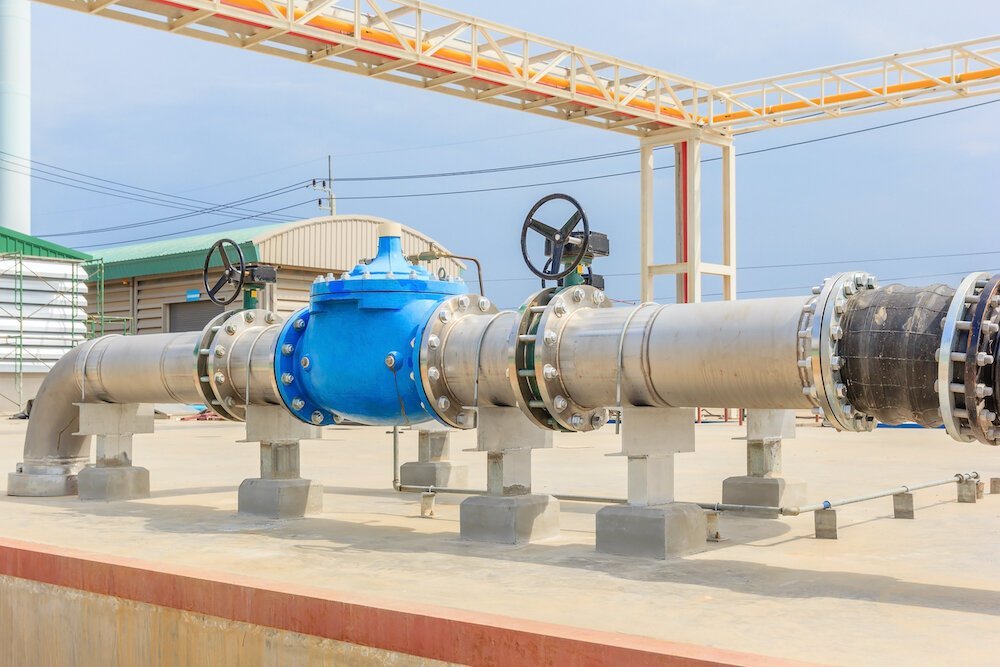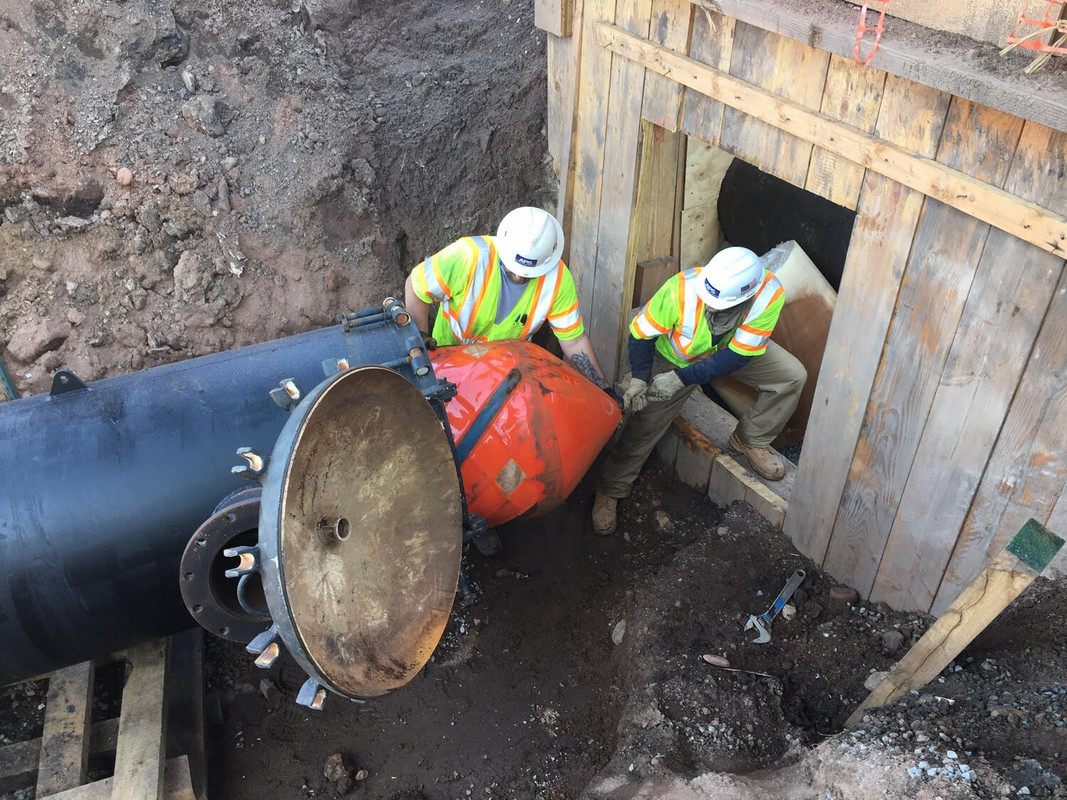Ice Pigging™ vs Traditional Pigging: Pros and Cons
Municipal and industrial water pipelines encounter numerous challenges throughout their lifespan. Sediment, biofilms, and mineral deposits can accumulate inside mains, reducing capacity, affecting water taste and odor, increasing pumping costs, and ultimately shortening the life of the infrastructure. To maintain performance and avoid costly disruptions, cleaning is essential.
Two of the most widely used pipeline cleaning methods are traditional hydraulic pigging and the more innovative Ice Pigging™ technique. Both are effective but in different ways, and the choice often depends on the size of the pipe, the type of deposits present, and the balance between cost, risk, and downtime.
Traditional Pigging: Advantages and Disadvantages
Traditional hydraulic pigging has been used for decades as a trusted pipeline cleaning method. The process typically begins with a “prover pig” equipped with a location device to check for obstructions. Once the line is confirmed clear, a series of specialized cleaning pigs are propelled by system pressure through the pipeline, scraping away sediment and scale while restoring flow.
Pipeline Experts: Inspection, Cleaning, Coating & More
Certified solutions for inspection, pre-commissioning, cleaning, internal coating, ice pigging™, mapping, and turnkey pipeline projects—maximizing safety and reliability at every stage.
Advantages
Effective for long runs and large diameters
Traditional pigging is highly versatile and can handle a broad range of pipe diameters—up to 96 inches. It is also capable of cleaning longer continuous segments than Ice Pigging™, although the ice method can still achieve 2–3 miles in smaller pipes.
Low likelihood of pigs getting stuck
While one concern with foam pigs is the risk of them becoming lodged, this occurs rarely in practice. In American Pipeline Solutions’ 100+ years of combined experience, stuck pigs have only been an issue when severe obstructions were present. When this happens, tracking technology helps locate the obstruction so it can be removed and flows restored. By contrast, an ice pig cannot become permanently stuck, as it will simply melt.
Ability to navigate complex geometries
With the right pig materials and sizing, traditional pigs can move through short-radius elbows, tees, and a variety of valve types without issue.
Restores pipelines to near-original condition
When applied correctly, hydraulic pigging can return pipelines close to their original capacity and performance, extending asset life.
Smart pigging for integrity assessments
Beyond cleaning, pigging technology can also diagnose problems. SmartFoam Tools are cost-effective for evaluating cast iron, ductile, and steel mains, identifying cracks, corrosion, and wall anomalies with less disruption than conventional inspections.
Disadvantages
More complex setup requirements
Traditional pigging requires launcher and receiver chambers, which often means excavation and installation work before cleaning can even begin. This increases project time and cost compared to Ice Pigging™, which can use existing fittings.
Higher water consumption
Traditional pigging consumes significantly more water than Ice Pigging™—often 50% more during a typical operation. By comparison, uni-directional flushing can use up to five times more water, making both pigging and Ice Pigging™ preferable from a sustainability perspective.
Ice Pigging™: Benefits and Limitations
Ice Pigging™ is a relatively new cleaning technology that uses a dense slurry of ice crystals suspended in water to scour the interior of pipelines. The slurry behaves like a solid while retaining the flexibility of a liquid, which allows it to move smoothly through bends, diameter changes, and valves such as butterfly valves without issue.
Advantages
Minimal disruption and simple setup
Unlike traditional pigging, Ice Pigging™ can be introduced and removed using existing fittings such as hydrants, washouts, or air valves. This eliminates the need for launching and receiving chambers, reducing excavation, installation costs, and community disruption.
Exceptionally low risk of blockage
Because the pig is made of ice, it cannot become permanently stuck. If the slurry encounters an obstruction, it simply melts away—removing one of the major risks associated with traditional or foam pigging.
Faster turnaround and immediate return to service
An ice pig can often be injected into a pipe in less than twenty minutes, and the entire process typically lasts only a few hours. Once cleaning is complete, the line can be returned to service immediately without the need for lengthy flushing or chlorination.
Reduced water consumption and environmental impact
Ice Pigging™ uses less than half the water required for conventional swabbing. This reduction not only cuts operational costs but also makes the method more sustainable, a growing priority for municipalities and utilities.
Limitations:
Less aggressive cleaning power
While very effective at removing sediment, deposits, and biofilms, Ice Pigging™ cannot match the force of a hard pig. It is less effective against hardened tuberculation or calcified fats, oils, and grease.
Limited to small and medium pipe diameters
The technique is most effective for pipes ranging from about 1.5 to 24 inches in diameter. For larger mains, traditional pigging is usually the better choice, provided the system does not contain too many tight bends or obstacles.
No diagnostic or tracking capability
Unlike foam or smart pigs, the ice slurry cannot be tracked as it moves through the pipeline. This means it cannot provide diagnostic data or pinpoint obstructions. While a completely closed valve or severe blockage will be discovered during injection, smaller anomalies may go unnoticed.
Cost Considerations
Cost is one of the most important deciding factors. Ice Pigging™ is generally less expensive because it avoids excavation and reduces downtime. Labor costs are lower since systems are usually back online within hours, not days. Reduced water consumption also lowers disposal and treatment costs.
Traditional pigging, however, may be more cost-effective for very large pipelines or when severe obstructions require aggressive cleaning that ice slurry cannot provide.
Downtime and Operational Disruption
For municipalities and industries, downtime is often the most disruptive aspect of pipeline maintenance. Ice Pigging™ minimizes this issue, as pipes can be cleaned and returned to service within the same shift. Traditional pigging, by contrast, may require extended outages, excavation, and post-cleaning disinfection, which can stretch into several days. This difference often makes Ice Pigging™ more attractive when maintaining service continuity is critical.
Environmental Impact
Sustainability is becoming an increasingly important factor in pipeline maintenance. Ice Pigging™ is the more environmentally friendly option, consuming less water—often less than half that of swabbing—and generating less wastewater for disposal. The reduced need for excavation also means less disruption to the surrounding environment. Traditional pigging, while effective, is more resource-intensive.
When to Choose Each Method
Ice Pigging™ is usually the preferred choice for small- to medium-diameter mains where biofilm, sediment, or minor deposits are the primary concern. It is quick, cost-effective, and environmentally efficient, making it ideal for municipal water networks that prioritize customer service and minimal disruption.
Traditional pigging is still the method of choice for large-diameter pipelines, heavily obstructed mains, or situations where a full mechanical cleaning is required. It is also the better option when diagnostic information on pipeline integrity is needed, thanks to smart pigging technology.
Pipeline Experts: Inspection, Cleaning, Coating & More
Certified solutions for inspection, pre-commissioning, cleaning, internal coating, ice pigging™, mapping, and turnkey pipeline projects—maximizing safety and reliability at every stage.
Learn more about the best solution to solve your pipeline flow issues
American Pipeline Solutions is North America’s oldest continuous pigging company with over 100 years of combined experience. We have pigged and restored over two million feet of pipeline to near original conditions.
Contact American Pipeline Solutions to learn more about our institutional expertise and to request a quote.



















